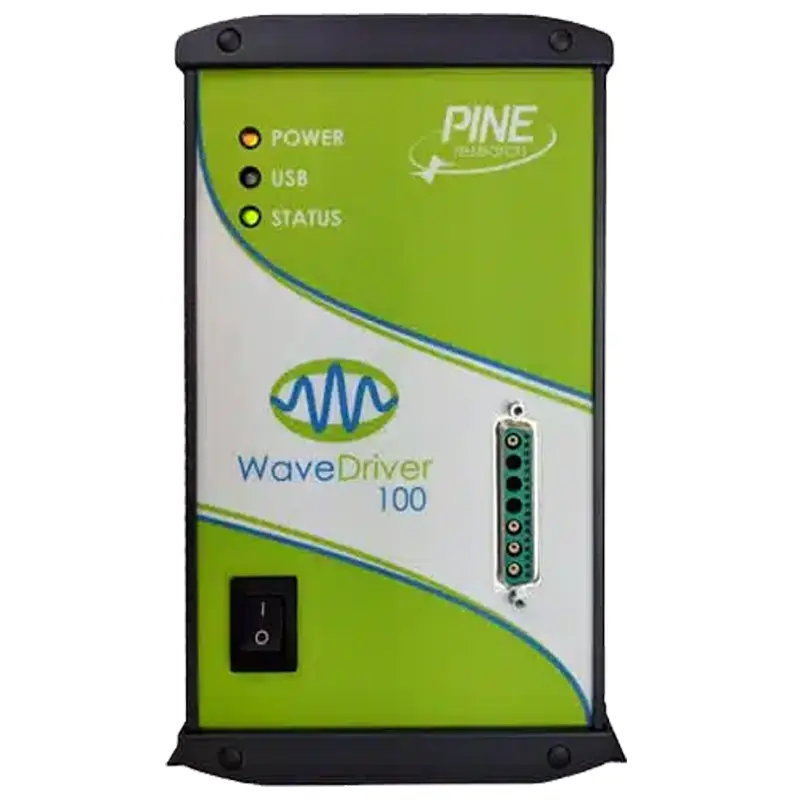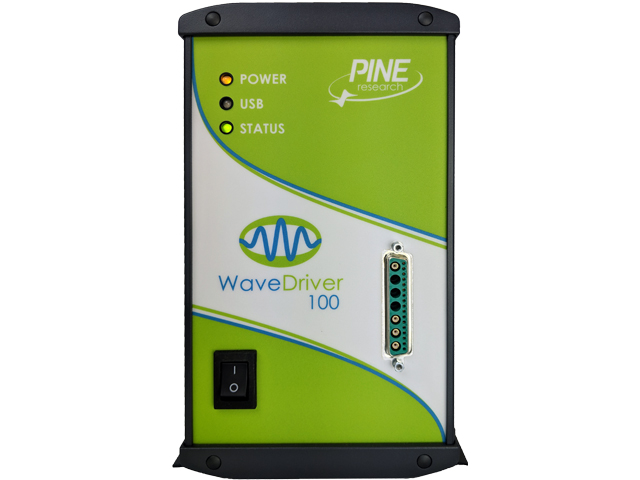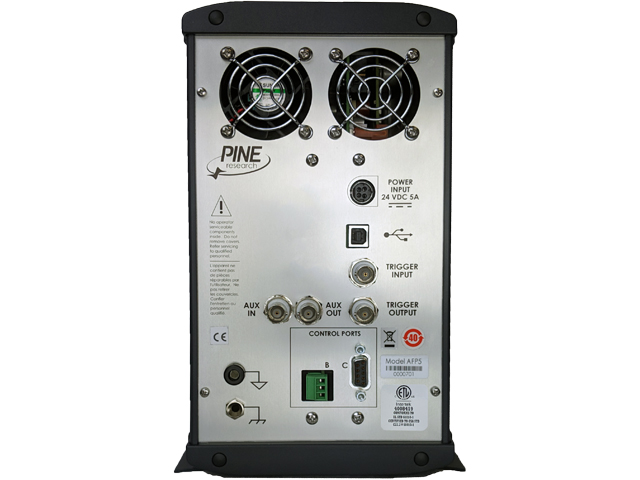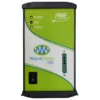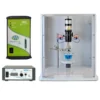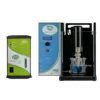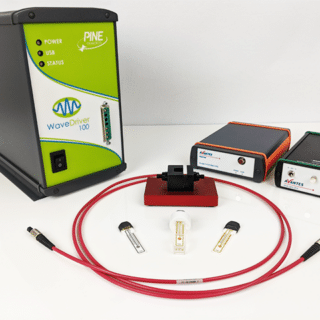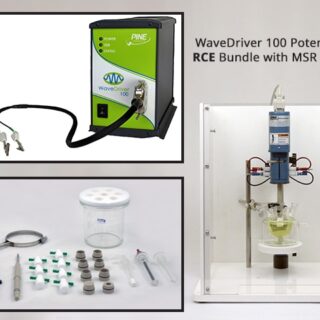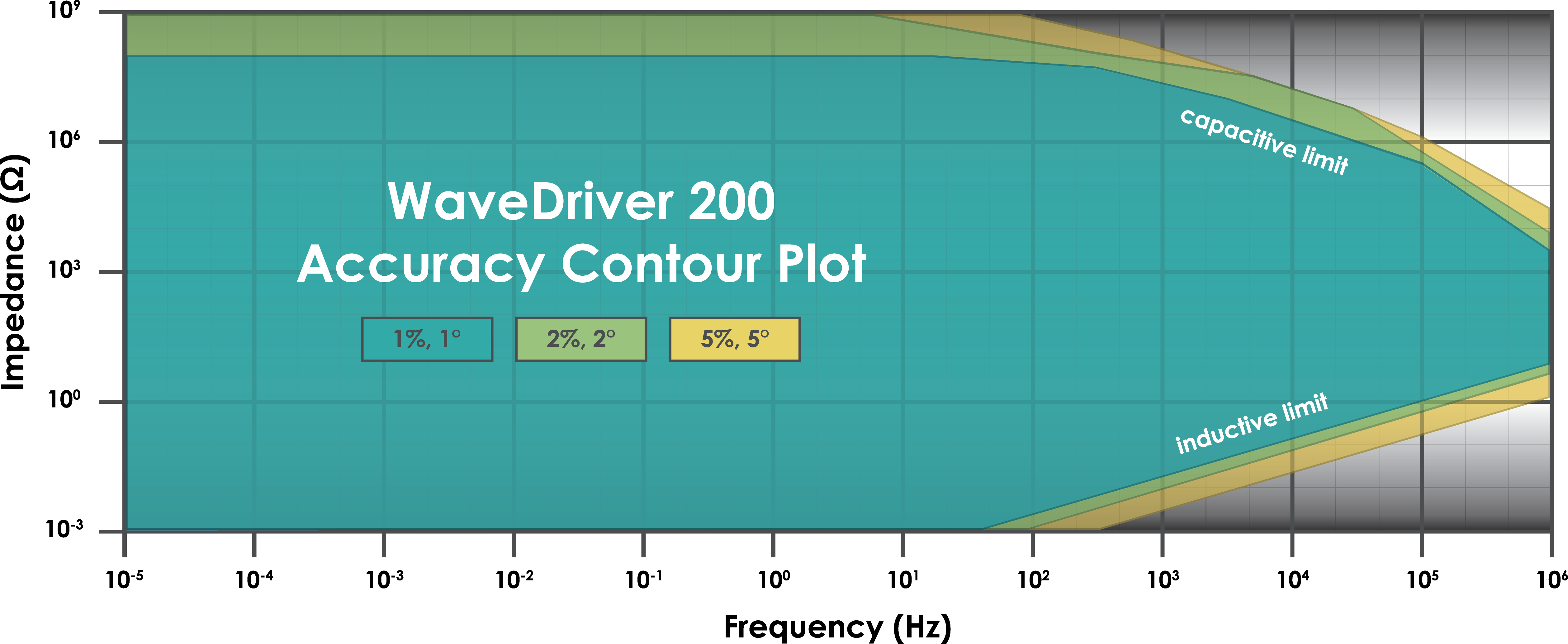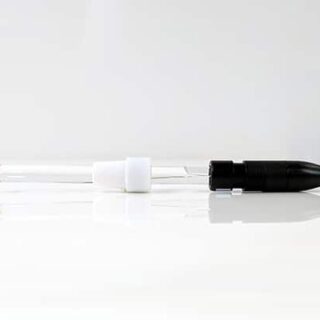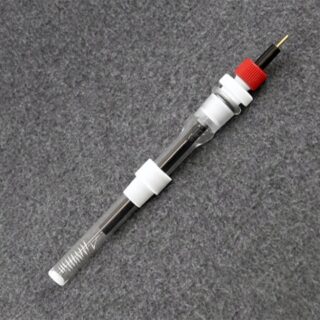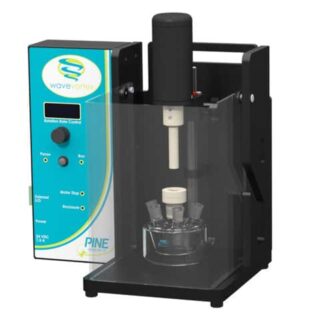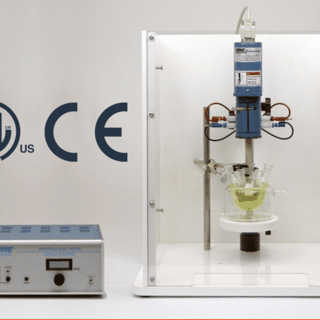The WaveDriver 100 Electrochemical Workstation has been engineered to provide you with the essential hardware and software features you need at an affordable price. This complete electrochemical workstation offered by Pine Research allows you to perform a full range of traditional DC electroanalytical techniques as well as Electrochemical Impedance Spectroscopy (EIS).
Applications. The WaveDriver 100 finds use in academic and industrial research laboratories around the world and across a wide variety of applications. The instrument offers a large range of accessible current ranges (±100 nA up to ±1 A) and potential ranges (±2.5V up to ±15 V) along with advanced filtering and iR compensation. Back panel connections allow rotation rate control when performing voltammetry using a Rotating Disk Electrode (RDE) or Rotating Cylinder Electrode (RCE). Additional input/output and timing connections permit the WaveDriver to control third-party instrumentation in applications such as spectroelectrochemistry.
Electrochemical Impedance Spectroscopy. Our talented team of engineers and chemists have taken a careful approach to integrating EIS into our WaveDriver series electrochemical workstations, giving you access to the most practical range of EIS frequencies (10 µHz to 1 MHz) at an affordable price. We have incorporated powerful and easy-to-use EIS equivalent circuit fitting directly into our AfterMath Blue software platform. Multiple curve fitting algorithms and options allow you to fit even the most troublesome EIS data to one of the built-in equivalent circuit models, or alternately, you can design and draw your own equivalent circuit model.
Integrated Curve Fitting and Analysis. Our software team has seamlessly integrated EIS curve fitting into AfterMath Blue. Why work with more than one software application to fit your EIS data when you can do it using the very same software application that acquired the data? AfterMath Blue EIS curve fitting utilities provide several analyses, including Circuit Fit, Transmission Line, and Kramers-Kronig. Unlike others, our fitting software also provides several fitting methods including Modified Levenberg-Marquardt (LM), Simplex, and Powell algorithms in addition to fitting options that include dynamic point selection, unity, and parametric fitting.
Novel Transmission Line Fitting. AfterMath Blue provides a unique approach to model your porous electrodes. While the transmission line model is not new, AfterMath Blue provides you with some unique transmission line fitting tools. Instead of a static circuit, where you have no control over the elements of the model, we provide a very flexible basic model, from which you can customize nearly all aspects of the model to suit your system. Give it a try – import your three- or five-column EIS data directly into AfterMath Blue and see the difference with our transmission line fitting.
Finishing Touches. While fitting your EIS data, why flip back and forth between Nyquist and Bode plots? Why not be able to view both plots and fits simultaneously? We heard this feedback from many customers and have designed AfterMath Blue to provide you with both plots simultaneously during fitting. Unique slider controls allow you to rapidly vary the value of one circuit component while watching the effect of that component on the Bode and Nyquist plots.

